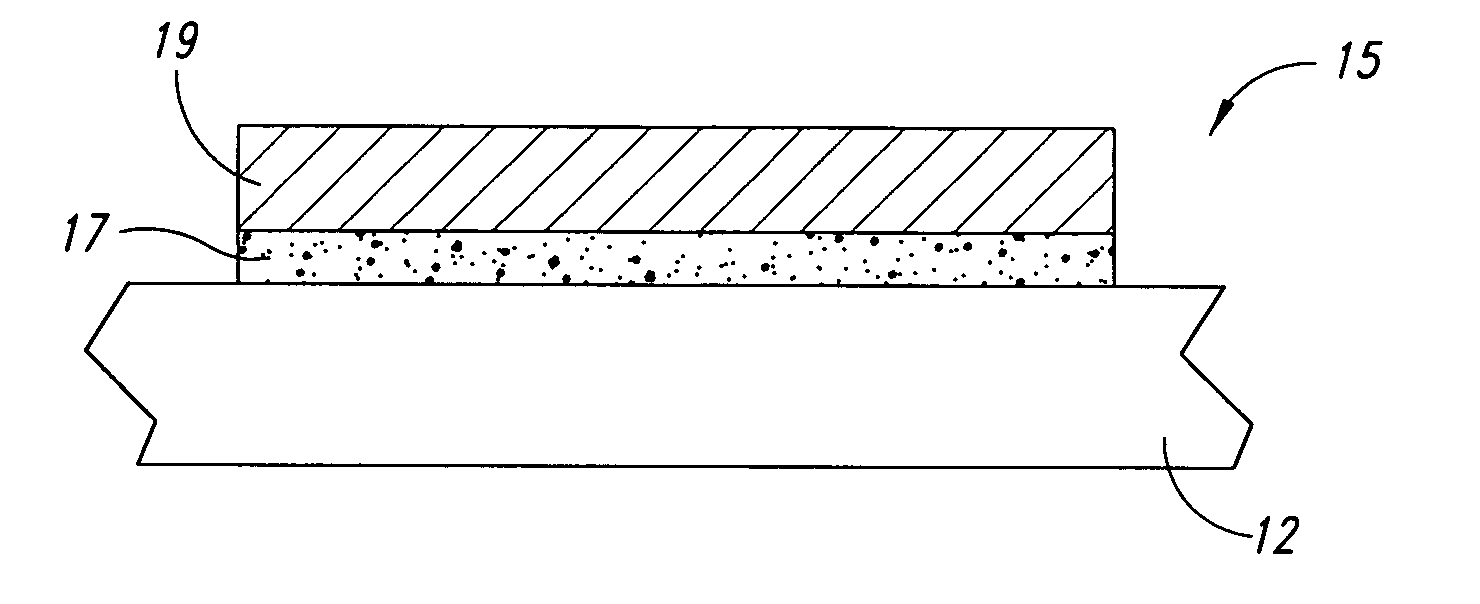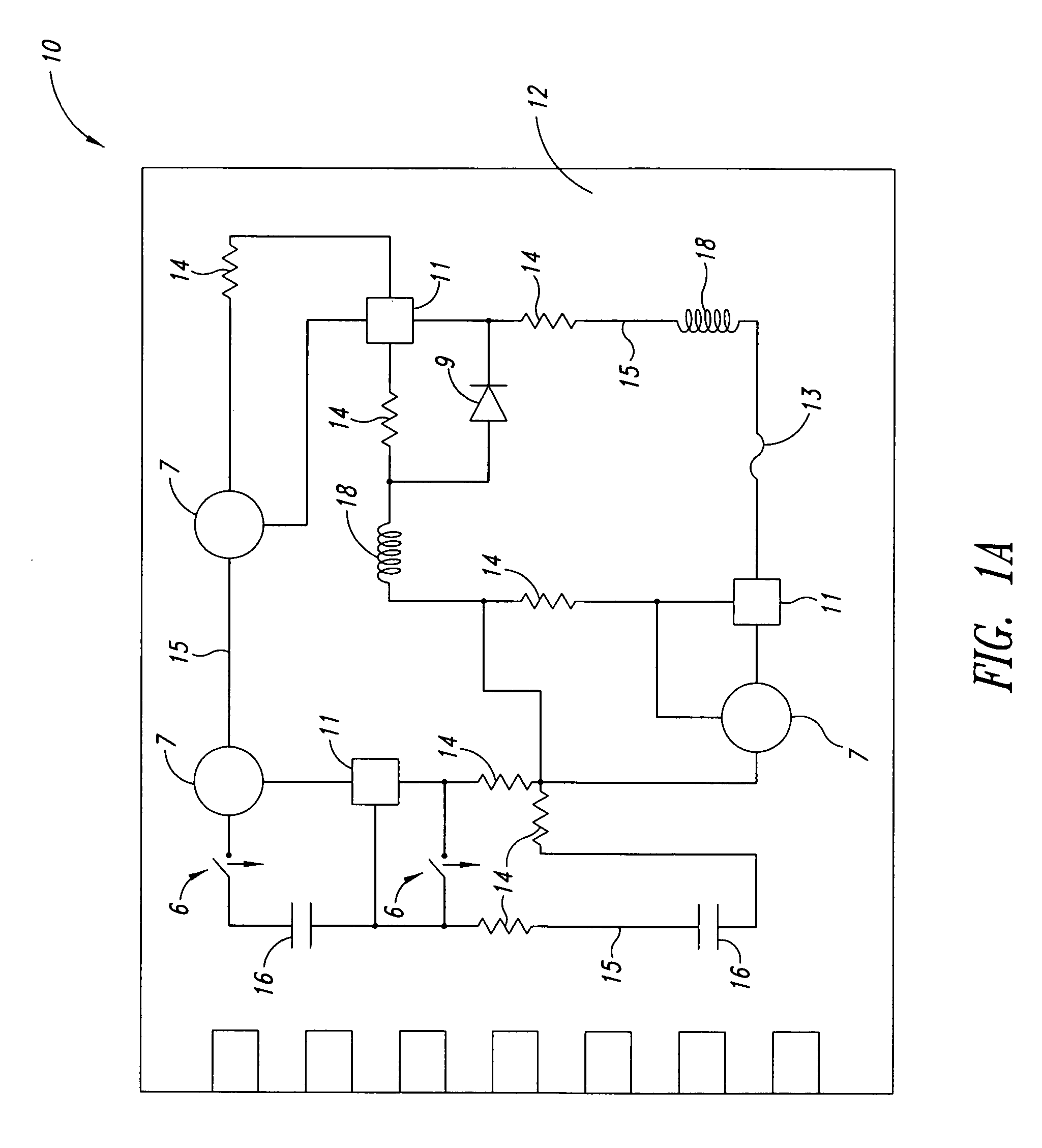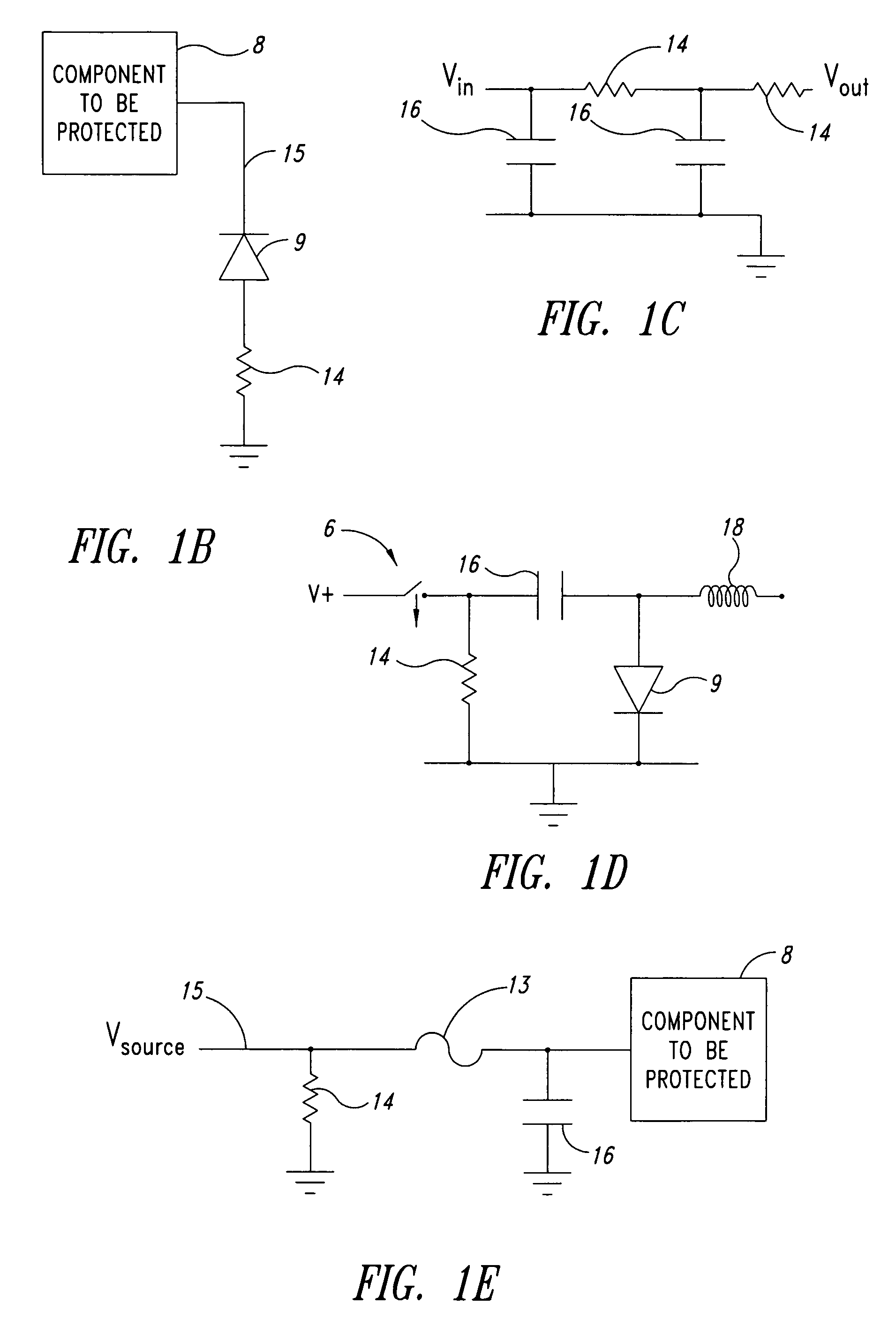Printable electric circuits, electronic components and method of forming the same
a technology of electronic components and printed circuits, applied in the field of electronic circuits, to achieve the effect of reducing costs and being easy to controllabl
- Summary
- Abstract
- Description
- Claims
- Application Information
AI Technical Summary
Benefits of technology
Problems solved by technology
Method used
Image
Examples
Embodiment Construction
[0064]FIG. 1A illustrates examples of various components that can be formed in a circuit 10 which has been constructed according to principles of the present invention. The circuit 10 includes a substrate 12 having an electrical connection which includes a variety of electrical components. Passive components may include fuse 13, resistors 14, capacitors 16, and one or more inductors 18. In some embodiments, only passive components are provided on the printed circuit. In other embodiments, one or more active components may be included on the circuit. The active components which may be included are a diode 9, or various other active components 7 and 11 which may be selected according to the needs of a particular circuit.
[0065]The circuit presented in FIG. 1A is provided for illustration purposes to demonstrate the variety of electrical components which can be electrically coupled to each other according to principles of the present invention and is not intended to illustrate the actua...
PUM
| Property | Measurement | Unit |
|---|---|---|
| particle size | aaaaa | aaaaa |
| particle size | aaaaa | aaaaa |
| temperature | aaaaa | aaaaa |
Abstract
Description
Claims
Application Information
 Login to View More
Login to View More - R&D
- Intellectual Property
- Life Sciences
- Materials
- Tech Scout
- Unparalleled Data Quality
- Higher Quality Content
- 60% Fewer Hallucinations
Browse by: Latest US Patents, China's latest patents, Technical Efficacy Thesaurus, Application Domain, Technology Topic, Popular Technical Reports.
© 2025 PatSnap. All rights reserved.Legal|Privacy policy|Modern Slavery Act Transparency Statement|Sitemap|About US| Contact US: help@patsnap.com



